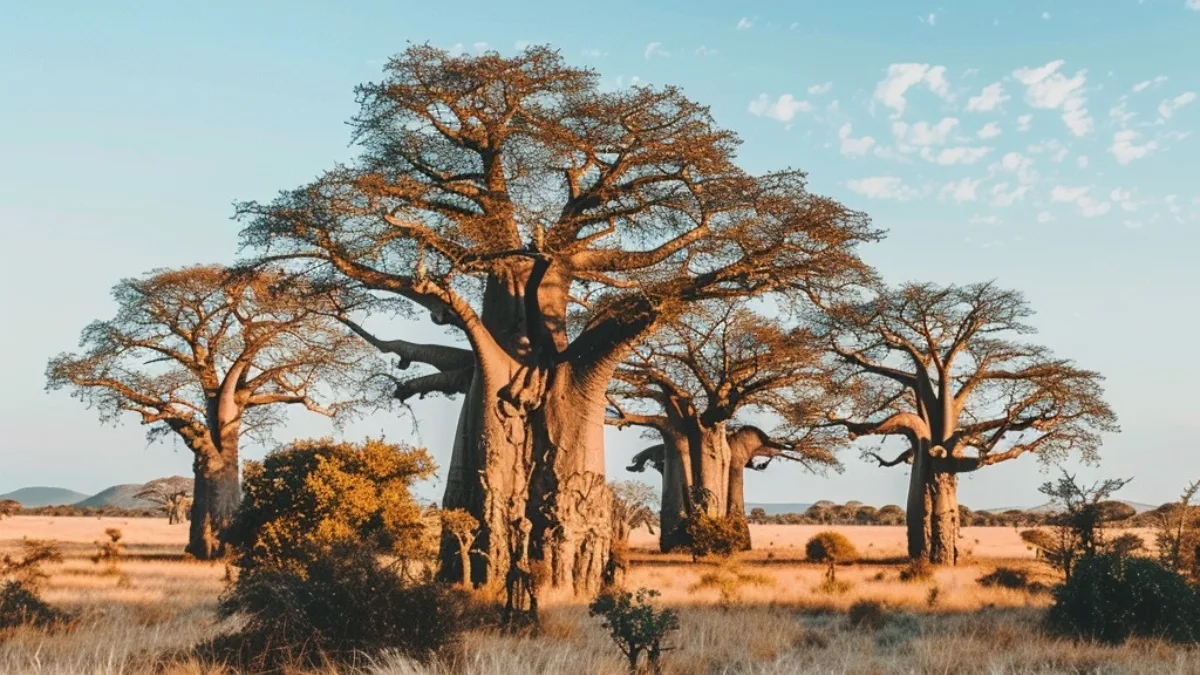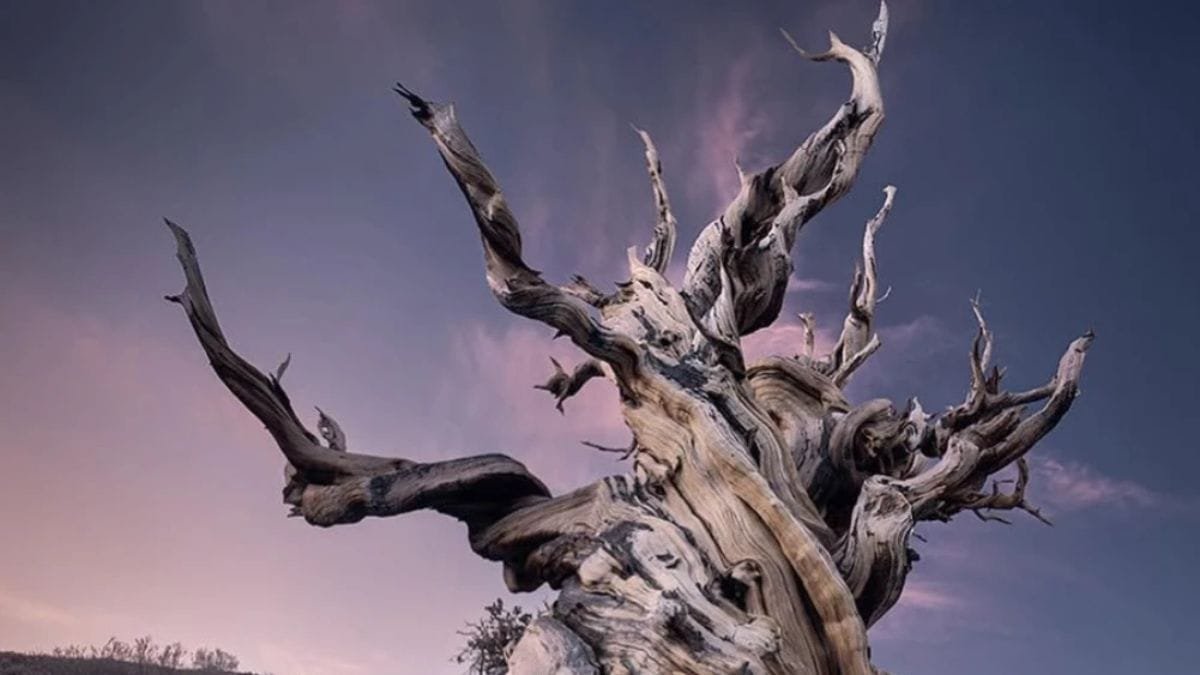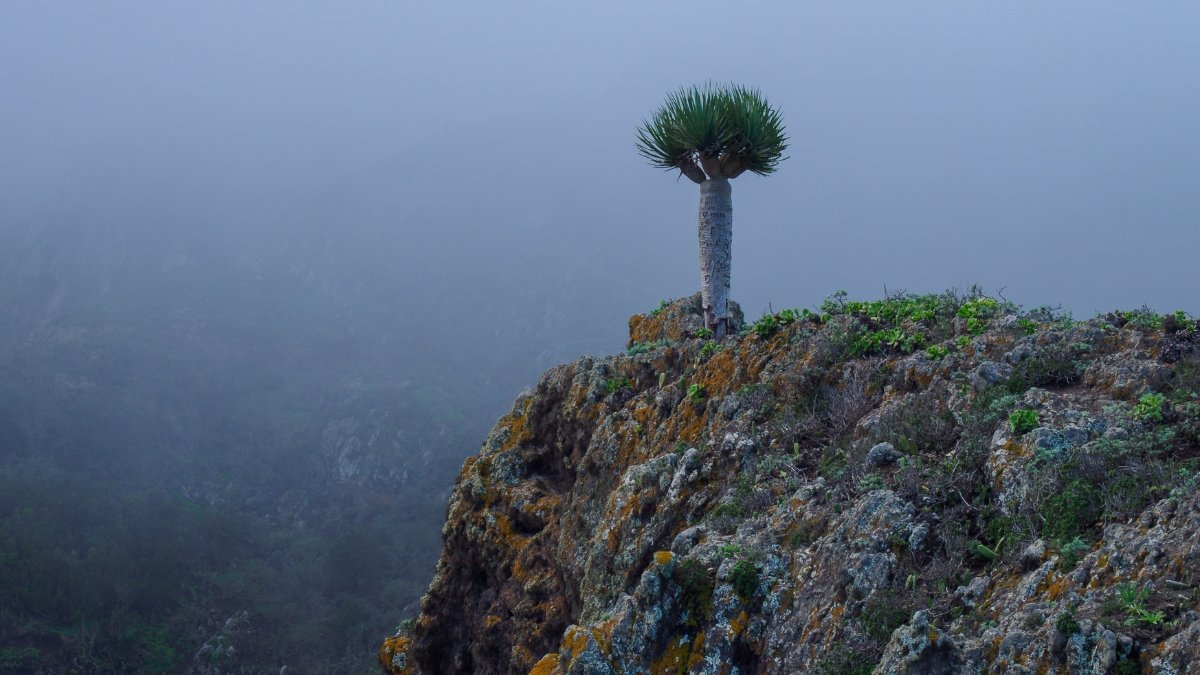From Madagascar’s ancient Baobabs to Japan’s enchanted bamboo forests, each tree holds secrets waiting to be discovered. Some twist mysteriously toward the sky, while others build vast underground networks that boggle the mind.
Our journey explores fifteen extraordinary trees that challenge our understanding of nature. You’ll discover trees that bleed red sap, forests frozen in time, and a single tree that spans 100 acres beneath the soil.
#1. Baobab Trees, Madagascar

Like ancient sentinels across Madagascar’s landscape, these majestic trees tell stories spanning thousands of years. Local communities revere these giants as sacred symbols, often calling them the mothers of the forest. Their massive trunks can store up to 120,000 liters of water, helping them survive long droughts.
Looking at these trees feels like stepping back in time, as some have witnessed over 2,800 years of history. Scientists study their rings to understand climate patterns from centuries past. The bark is a vital resource for local communities, providing material for ropes and cloth.
These trees shed their leaves during dry seasons, creating an otherworldly appearance against the sky. Their fruits offer essential nutrients to both wildlife and humans. Each tree supports its own mini-ecosystem, housing countless birds, insects, and small mammals.
#2. Japanese Maple, Portland

Nature’s artistry shines through these graceful trees, with their delicate leaves painting the landscape in vibrant colors. Each branch twists and turns uniquely, creating natural sculptures that change with the seasons. Spring brings soft green leaves that dance in the breeze, while autumn transforms them into fiery displays of red and orange.
Careful cultivation over centuries has produced numerous varieties, each with distinct characteristics. Some grow tall and proud, while others remain small and compact, making them suitable for various garden spaces. Their root systems show remarkable adaptability, thriving in different soil conditions.
Rain catches on their star-shaped leaves, creating natural music during storms. Local gardeners cherish these trees for their ability to provide year-round interest and beauty. Their presence brings a sense of tranquility to any space they inhabit.
#3. Angel Oak Tree, South Carolina

This magnificent giant spreads its branches like protective arms over the Charleston landscape. Generations of families have gathered under its sprawling canopy, sharing stories and making memories. Sunlight filters through its massive limbs, creating enchanting patterns on the ground below.
Some branches have grown so long they touch the earth before reaching skyward again. Local legends speak of spirits dwelling within its ancient trunk, watching over visitors who come to admire its beauty. The tree has survived countless hurricanes and storms, standing as a testament to nature’s resilience.
Wildlife finds shelter among its countless nooks and crannies. Multiple branches stretch over 100 feet from the main trunk, defying gravity with their impressive reach. Moss drapes elegantly from its limbs, adding to its mysterious allure.
#4. The Trees Of Dead Vlei

Frozen in time against Namibia’s towering sand dunes, these haunting sentinels tell a story of environmental change. Sun-blackened trunks stand stark against the white clay pan, creating surreal photographs that look almost unreal.
These trees have remained preserved for centuries due to the extremely dry climate. Rising dunes slowly cut off the trees’ water supply, leading to their eventual death. Morning light casts long shadows across the cracked earth, highlighting their dramatic silhouettes. Scientists study these trees to understand climate change patterns from centuries past.
The contrast between the orange dunes and dark trees creates one of nature’s most striking views. Local guides share tales of ancient times when rivers flowed through this now-parched landscape. Photographers worldwide travel here to capture their eerie beauty.
#5. Dragon Blood Tree, Yemen

Rising from Socotra’s unique landscape, these unusual trees look like something from another planet. Their distinctive umbrella-shaped canopies help them survive in harsh desert conditions. Ancient traders valued their dark red resin, believing it held magical properties.
The trees grow in scattered groups across the island, each one taking decades to reach maturity. Their unusual shape helps them collect precious moisture from passing clouds and fog. Local communities still use the tree’s resin for traditional medicine and dyes. Young trees grow slowly, carefully adapted to the challenging environment.
Their presence on the island dates back to times when dinosaurs roamed the Earth. Branches spread outward and upward in a precise pattern, maximizing their ability to capture scarce rainfall.
#6. The Crooked Forest, Poland

Mysterious and captivating, these oddly bent pine trees have puzzled scientists for decades. Each trunk curves sharply at its base, creating an unusual northward arch before stretching toward the sky. Local folklore tells various tales about their strange shape, from snowstorms to farming techniques.
Researchers study these trees to understand how they achieved such uniform bending. Visitors often feel like they’ve stepped into a fairy tale when walking among these curved trunks. The surrounding straight pines make the curved ones stand out even more dramatically. Birds build nests in the unique curves, adding life to this strange forest.
The trees continue to grow normally despite their unusual base shape. Seasonal changes bring new perspectives to their distinctive silhouettes. Scientists believe human intervention caused this peculiar growth pattern, though the exact method remains unknown. The forest’s eerie atmosphere draws photographers and nature lovers from around the world.
#7. Pando, Utah

Beneath the soil of this seemingly ordinary forest lies an extraordinary secret. Thousands of aspen trees share a single root system, making them one living organism. Autumn transforms the leaves into a golden canopy, revealing the trees’ genetic similarity.
Scientists estimate this giant organism has lived for 80,000 years. The connected root system allows trees to share nutrients and support each other. Fall winds create a mesmerizing ripple effect through the identical leaves. New saplings emerge from the ancient root system, continuing the forest’s legacy.
Climate changes threaten this remarkable living system’s survival. Local conservation efforts focus on protecting this unique natural wonder. Wildlife depends on this massive organism for shelter and sustenance. The underground network spans over 100 acres, making it one of Earth’s largest living things.
#8. Methuselah, California

High in the White Mountains stands a tree that has witnessed nearly five millennia of Earth’s history. Strong winds and harsh conditions have shaped its twisted trunk over thousands of years. This ancient bristlecone pine keeps its exact location secret to protect it from damage.
The tree has survived countless droughts, storms, and temperature extremes. Scientists study its growth rings to understand climate patterns from thousands of years ago. Small needles grow densely on weathered branches, showing remarkable resilience.
The tree’s slow growth helps it endure extreme conditions at high altitudes. Rangers carefully monitor its health while keeping its identity hidden. The gnarled wood tells stories of centuries past through its intricate patterns. Local guides share tales of its incredible age while protecting its location.
#9. Wisteria Tunnel, Japan

Cascading purple blooms create a magical walkway that captures hearts each spring. Carefully trained vines form a living tunnel that stretches for several meters. Sunlight filters through the flowers, creating enchanting light patterns below. The sweet fragrance of wisteria blossoms fills the air during peak bloom.
Generations of gardeners have maintained these beautiful flowering vines. Photographers gather to capture the tunnel’s changing colors throughout the season. Japanese culture celebrates these flowers in art and poetry. The sturdy support structure allows the plants to create their natural archway.
Visitors from worldwide time their trips to witness this spectacular display. The tunnel offers different experiences as light changes throughout the day. Seasonal changes bring new beauty to this living architecture.
#10. Antarctic Beech, Australia

Ancient rainforests harbor these living links to prehistoric times. These remarkable trees tell the story of continental drift and ancient connections. Dense canopies create their own microclimate in the forest below.
Scientists study these trees to understand how plants adapted over millions of years. The twisted trunks bear witness to countless seasonal changes. Moss-covered branches support diverse ecosystems of smaller plants and animals. Some specimens have stood for thousands of years in these remote forests. The trees share characteristics with relatives found across the Southern Hemisphere.
Local communities work to protect these biological treasures for future generations. Misty conditions often shroud these giants, creating an ethereal atmosphere. Their presence helps researchers understand how forests once spread across ancient supercontinents.
#11. The Chapel Oak, France

Centuries of history live within this remarkable oak’s hollow trunk. Craftsmen carved two tiny chapels inside its massive core, creating a unique blend of nature and architecture. Religious pilgrims visit this living church to pray in its intimate wooden chambers.
Time has weathered its exterior, yet the tree continues to sprout new leaves each spring. The spiral staircase wraps around the trunk, leading visitors to sacred spaces above. Local residents proudly share stories of the tree’s survival through countless historical events. Its branches have witnessed the rise and fall of empires, revolutions, and wars.
Small windows in the chapel walls allow soft light to filter through the leaves. The tree stands as a testament to both natural resilience and human creativity. Community efforts help preserve this remarkable fusion of spiritual and natural worlds. Yearly celebrations honor its role in local heritage and culture.
#12. Tibetan Cherry Tree, China

Stunning red bark makes these trees stand out in any landscape. Natural oils give the trunk its remarkable sheen, catching sunlight like polished copper. Young saplings slowly develop their characteristic color as they mature. Mountain slopes dotted with these trees create breathtaking views in their native range.
The bark’s unusual strength makes it valuable for both practical and decorative uses. Local artisans create beautiful objects from fallen branches, honoring the tree’s unique properties. Birds often nest in these trees, adding splashes of movement to their striking appearance.
Each season brings subtle changes to the bark’s rich coloring. Traditional medicine uses various parts of the tree for healing purposes. Gardens worldwide now feature these trees for their outstanding ornamental value. The contrast between dark leaves and bright bark creates year-round visual interest.
#13. Sagano Bamboo Forest, Japan

Walking through these towering green stalks feels like entering another world. Sunlight filters through the dense canopy, creating an ethereal atmosphere below. The sound of bamboo stems swaying and creaking in the wind creates nature’s own symphony.
Ancient Japanese culture recognized this forest’s unique ability to soothe the soul. Photographers capture amazing light shows as sun rays pierce through gaps in the bamboo. Local traditions honor the forest’s role in maintaining ecological balance. The bamboo grows incredibly fast, sometimes adding several feet in a single day.
Pathways wind through the stems, offering visitors peaceful spaces for reflection. Wind creates different sounds as it passes through varying heights of bamboo. The forest provides sustainable resources for traditional crafts and building materials. Morning mist adds mystery to this already enchanting environment.
#14. Strangler Fig, Ta Prohm Bahrain

Stone and wood intertwine in an endless embrace at this ancient temple site. Massive tree roots flow over walls like frozen waterfalls, creating surreal architectural forms. Time stands still as nature slowly reclaims human-made structures. The trees support crumbling walls while simultaneously breaking them apart.
Monkeys swing through the twisted branches, bringing life to these ancient ruins. Centuries of growth have created an inseparable bond between temple and tree. Morning light casts intricate shadows through the web of roots and branches. The trees provide crucial support to structures that might otherwise collapse.
Local guides share tales of the temple’s transformation over hundreds of years. Photographers worldwide seek to capture this unique merger of architecture and nature. The site demonstrates nature’s power to transform human creations.
#15. The Oyamel Fir Forest, Mexico

Millions of monarch butterflies transform these trees into living tapestries each year. Branches bend under the weight of countless orange wings clustering together. Local communities celebrate the annual arrival of these remarkable insects.
The forest creates specific conditions that draw butterflies from thousands of miles away. Cool mountain air protects the delicate creatures during their winter stay. Scientists study this unique relationship between trees and butterflies. The forest plays a crucial role in maintaining monarch butterfly populations. Morning sun causes waves of butterflies to take flight, creating spectacular displays.
Conservation efforts focus on protecting this essential habitat for future generations. Visitors speak in hushed tones, respecting the peaceful atmosphere of this special place. The connection between these trees and butterflies spans countless generations.

